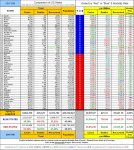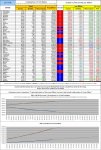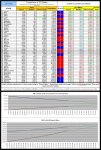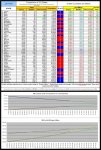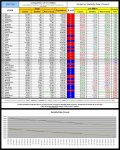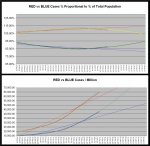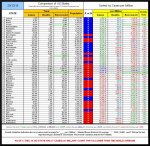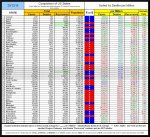- Joined
- Nov 5, 2020
- Messages
- 3,510
- Reaction score
- 1,457
- Gender
- Male
- Political Leaning
- Slightly Liberal
I respectfully submit this as evidence of coronavirus stats: https://docs.google.com/spreadsheets/d/19l7aXMqM33Z_NOfLgxfnCzpAAzu6uBNXYFERskusZcA/edit#gid=0
These are the official COVID stats provided by state departments (usually the health department of a given state) as a basis. Columns labeled "1% Bias" are 1% of whatever. So, when the media says "Deaths are up 1%," that's what 1% actually is. 4% underreporting bias is increasing the official stats by 4%. My friend saw this number, so I grabbed it and put it in.
When add a new edition, it will be commented to show which states are taking the national percentage of hospitalizations vs. actual numbers because the state department in whatever state is not reporting the hospitalization rate. I can provide those states now if you would like. So if the average hospitalization rate is 7%, the state would should 7% of that state being hospitalized. We also have fatality rate as compared to those hospitalized. Trump approval rating was achieved by googling it and finding the most recent article I could find, same with governor. +/- is compared to 50 percent (so 49% approval is -1 on the sheet) because it's easier for me to understand it that way the way my brain works.
COVID approval numbers and columns for vaccines and safe to reopen schools came from here: https://covidstates.org
Stats that are not as obvious on state websites were added from covidtracking.org. Sometimes they were one or two updates behind.
I manually entered this on the spreadsheet, which copied from the master spreadsheet I have running as I update it piecemeal. So, Alaska may not have been updated on the same day as Wyoming, but usually within the same week. This is raw data, so I'm not drawing conclusions from it or trying to prove anything. In fact, I was surprised by some of the results, and that's half the fun!
Most other columns should be fairly obvious about what they are doing, but if you need to know what it's doing, just ask!
These are the official COVID stats provided by state departments (usually the health department of a given state) as a basis. Columns labeled "1% Bias" are 1% of whatever. So, when the media says "Deaths are up 1%," that's what 1% actually is. 4% underreporting bias is increasing the official stats by 4%. My friend saw this number, so I grabbed it and put it in.
When add a new edition, it will be commented to show which states are taking the national percentage of hospitalizations vs. actual numbers because the state department in whatever state is not reporting the hospitalization rate. I can provide those states now if you would like. So if the average hospitalization rate is 7%, the state would should 7% of that state being hospitalized. We also have fatality rate as compared to those hospitalized. Trump approval rating was achieved by googling it and finding the most recent article I could find, same with governor. +/- is compared to 50 percent (so 49% approval is -1 on the sheet) because it's easier for me to understand it that way the way my brain works.
COVID approval numbers and columns for vaccines and safe to reopen schools came from here: https://covidstates.org
Stats that are not as obvious on state websites were added from covidtracking.org. Sometimes they were one or two updates behind.
I manually entered this on the spreadsheet, which copied from the master spreadsheet I have running as I update it piecemeal. So, Alaska may not have been updated on the same day as Wyoming, but usually within the same week. This is raw data, so I'm not drawing conclusions from it or trying to prove anything. In fact, I was surprised by some of the results, and that's half the fun!
Most other columns should be fairly obvious about what they are doing, but if you need to know what it's doing, just ask!
Last edited:

